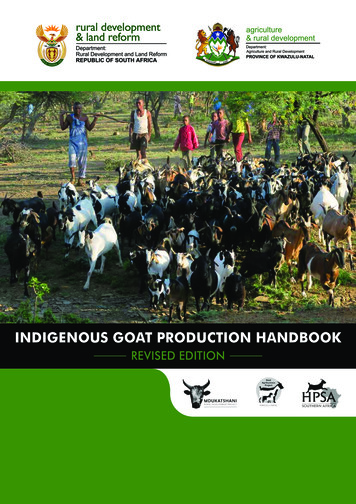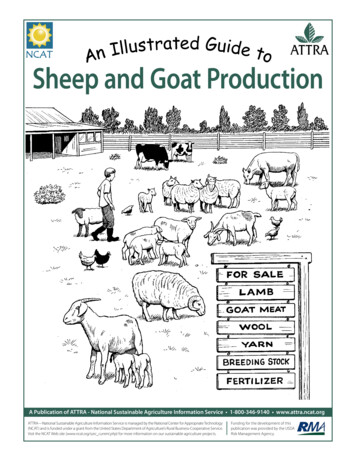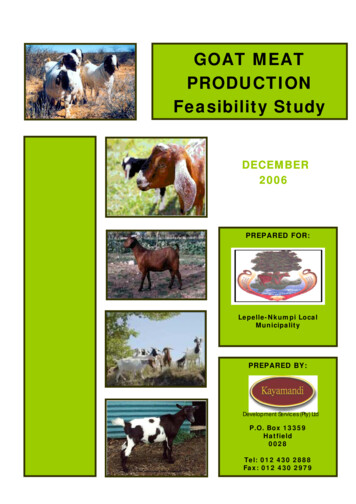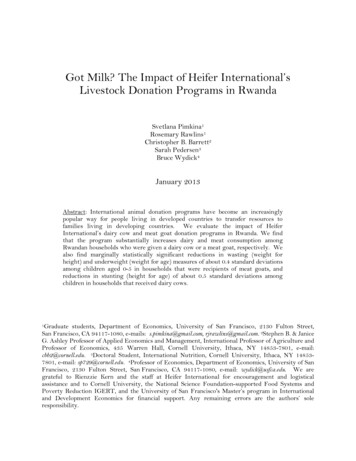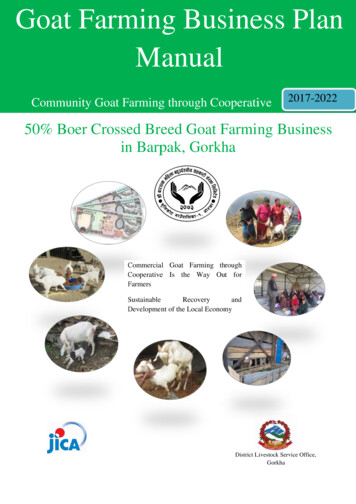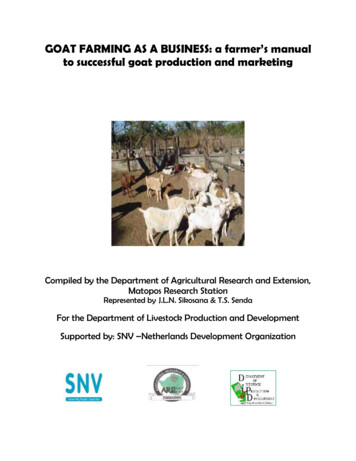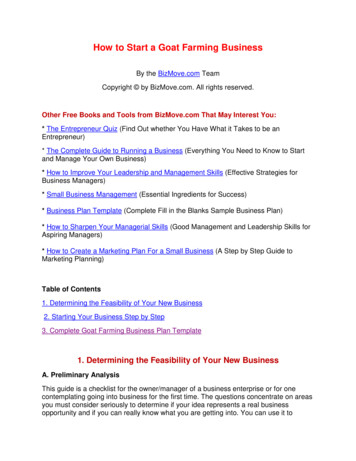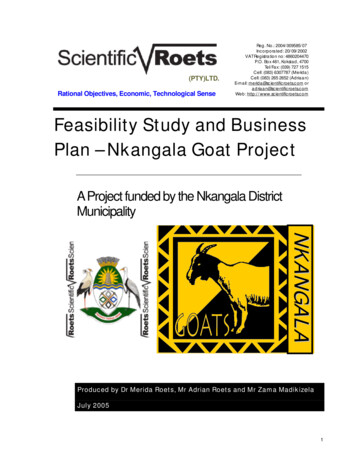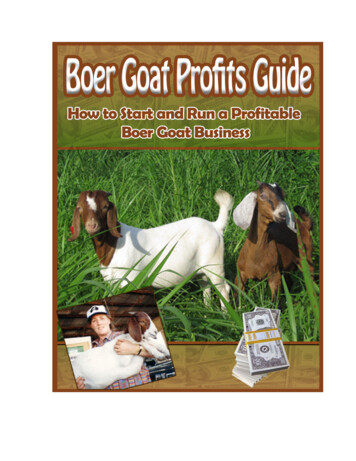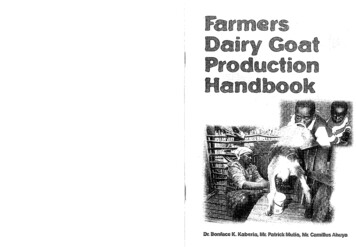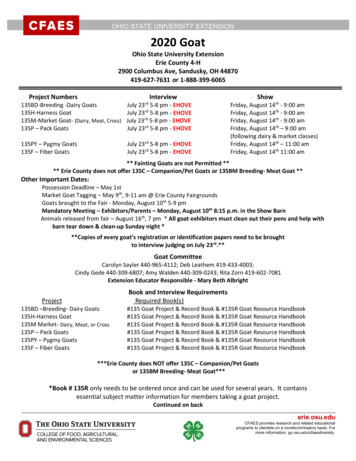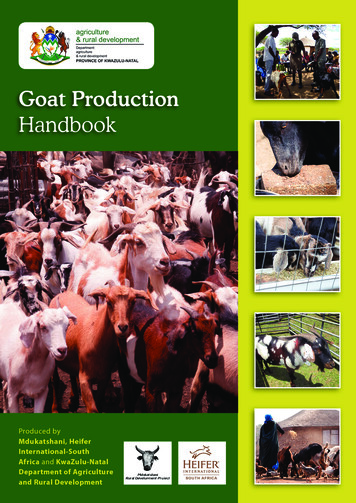
Transcription
Goat Production Handbook2015Prepared by:Mdukatshani, Heifer International-South Africa and KwaZuluNatal Department of Agriculture and Rural DevelopmentContributors:Rauri Alcock, Robert de Neef, Hannes de Villiers, TrevorDugmore, Francois du Toit, Marisia Geraci, Sibongiseni Gcumisa,Sibusiso Gumede, Jessica Kincaid-Smith, Manqhai Kraai, BrigidLetty, Joanne Mann, Gugu Mbatha, Dumisani Mtshali, DerrynNash, Nomfuzo Mkhize, Derryn Nash, Zandile Ndlovu, KeithPerrett, Alan Rowe, Janet Taylor, Thati Tladi, Erika van ZylThis book has made use of material contained in a deliverablesubmitted under the Goat Commercialisation Pilot Projectto KZN Department of Economic Development, Tourism andEnvironmental Affairs (DEDTEA) by the Institute of NaturalResources NPC in 2010. The contribution of DEDTEA is herebyacknowledged.Illustrations: Stefan de VosDesign and layout: Tangerine Design
Goat ProductionHandbookProduced byMdukatshani, Heifer International-South Africa and KwaZulu-Natal Departmentof Agriculture and Rural Development
2Goat Production Handbook
ContentsPurpose of this book .6PART 1: BASICS OF KEEPING GOATS .71. An introduction to goats .81.1 Different goat breeds. 81.2 Basic information for indigenous goats. 91.3 Handling your goats. 91.4 Flock identification .102. Keeping your animal healthy . 112.1 Why keep animals healthy?.112.2 Why is flock health important?.122.3 What keeps animals healthy?.132.4 Why is food important?.142.5 What is the importance of good hygiene practices?.142.6 Vaccination (preventative health care).143. Common diseases and conditions . 153.1 Heartwater (Umqhaqhazelo emazinyaneni).153.2 Abscesses (Amathumba).163.3 “Malkop” or “Draai Siekte” (Tapeworm cyst in the brain causing brain damage).163.4 Scours or diarrhoea.173.5 Mange.173.6 Coccidiosis.183.7 Orf.193.8 Foot problems.193.9 Bloat.213.10 Mastitis (Ukufa kwemibele).213.11 Abortion.223.12 Tetanus.233.13 Infectious pneumonia (Pasteurellosis).233.14 Pulpy Kidney (Enterotoxaemia).243.15 Bluetongue.253.16 Black Quarter/Quarter Evil (Umkhonywana) .263.17 Uncommon diseases.27Goat Production Handbook3
4. Internal and external parasites. 294.1 Internal parasites.29Checking for signs of anaemia.324.2 External parasites.334.3 Poisonous plants.354.4 Deaths due to eating plastic.375. Basic equipment and vet kit essentials. 385.1 Key equipment.385.2 Consumable medicines and equipment.395.3 Storage of medication, expiry dates and withdrawal periods.406. Treating your animals correctly. 416.1 Method of giving medication.416.2 Weighing your goat.416.3 Giving the correct dosage.416.4 Taking your goat’s temperature.426.5 Giving injections.436.6 Trimming hooves.44PART 2: GOAT COMMERCIALISATION . 457. General management . 467.1 Condition scoring.467.2 Ear tagging .477.3 Record keeping.487.4 Checking age of goat.487.5 Treatment calendar (including vaccination).498. Housing and handling facilities . 508.1 Shelter.508.2 Equipment for feed and water provision.518.3 Handling facilities .529. Nutrition and feeding . 539.1 Basics of nutrition and feeding.539.2 Supplementary feeding of goats .5610. Reproduction and kidding . 6110.1 Breeding season.6110.2 Ram management.614Goat Production Handbook
10.3 Ewe management.6211. Kid rearing . 6411.1 Interventions to reduce kid mortalities.6411.2 Castration.6411.3 Rearing orphans.6511.4 Creep feeding kids.
8 Goat Production Handbook 1. An introduction to goats 1.1 Different goat breeds Goat breeds can be divided into three categories: 1. ndigenous I breeds which have been naturally selected for adaptability to harsh environ-ments and which are generally used for meat

